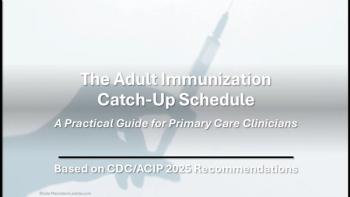
5 Qs on Managing Hepatitis C in the Young
How much do you know about HCV treatment in children and teens? Take this short, 5-question quiz to find out.
At what age can hepatitis C virus (HCV) RNA testing begin? Which pediatric patients are at greatest risk for HCV? Test your knowledge of diagnosis and treatment of HCV infection in children and teens with this month’s HCV quiz below.
Question 1.
Answer: B. 12-19 year olds. While the prevalence of HCV is higher in adults, as many as 5 million children worldwide have active HCV infection, one recent
Question 2.
Answer: A. Yes, if the mother is HCV-infected. Whether HCV RNA testing is warranted in the first year of life is the subject of substantial debate. Those opposed say it won’t obviate the need for definitive, antibody-based testing at 18 months of age or later, as is recommended in
Question 3.
Answer: C. Ledipasvir/sofosbuvir. Sofosbuvir and ledipasvir/sofosbuvir were the first direct-acting antiviral drug regimens to be approved for treatment of pediatric patients. Both were previously FDA-approved in adults and are
Question 4.
Answer: E. None of the above. Solid organ and bone marrow transplantation are not contraindicated in children with chronic HCV infection, according to HCV
Question 5.
Answer: A. The boy should not share toothbrushes or nail clippers with siblings. HCV-infected children may face discrimination and stigmatization at school or in childcare due to poor public understanding of HCV infection. Parents can be told that, since the virus is not transmitted through casual contact, infected children can be encouraged to participate in sports and other normal childhood activities with no restrictions. Families should not be forced to disclose the HCV infection status of a child, according to HCV guidelines. By contrast, families and children should be educated about techniques to minimize risk of HCV transmission, such as not sharing toothbrushes, nail clippers, and razors.
Newsletter
Enhance your clinical practice with the Patient Care newsletter, offering the latest evidence-based guidelines, diagnostic insights, and treatment strategies for primary care physicians.
































































































































































































































































































